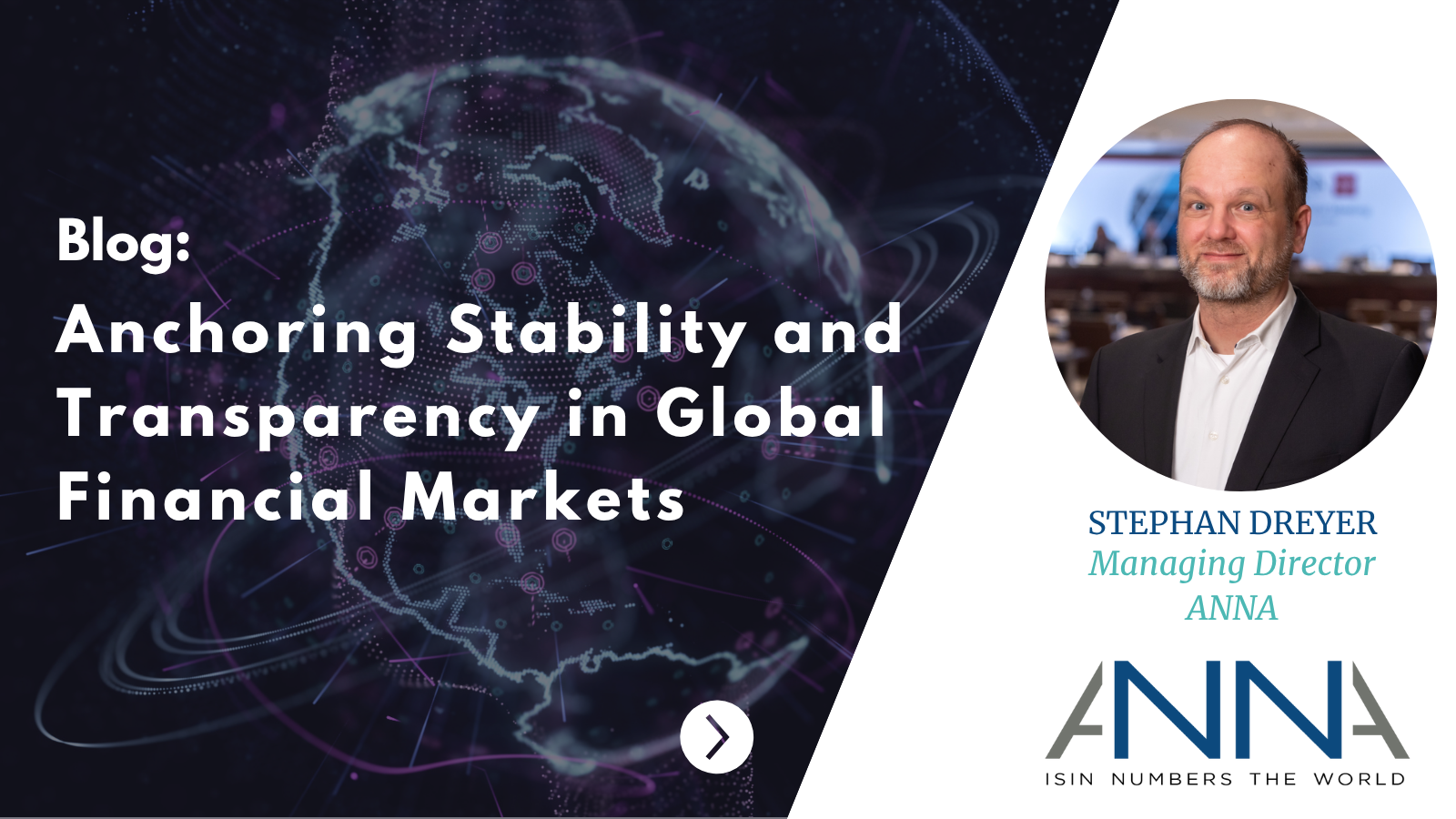First published on TabbFORUM, 25 June 2025. A universal language Consensus-based financial standards developed by…
Bridging the Gap: Importance of IDs in linking digital and traditional assets
What is gradually becoming clear amidst the ups and downs of the cryptoworld is that not all digital assets are created equal. Dogecoin, the ‘dog’ meme cryptocurrency that started as a joke in 2013, has seen its value increase by more than 13,000% in the past four months thanks in part to Elon Musk’s tweets of support. Things are not looking as positive for Ripple, however, as the payments settlement system and cryptocurrency (XRP) faces a lawsuit by the U.S. Securities and Exchange Commission (SEC) arguing that XRP is a security, rather than a commodity or other type of asset. Further legal challenges involving Bitfinex and Tether were spearheaded by The New York Attorney General’s office (NYAG) who charged that the parent company commingled client and corporate funds to cover up $850 million that went missing.
As we move forward – and digital assets begin to cover an ever-widening array of assets from art, cars, coins, utilities, and securities – we run the risk of facing even more confusion over the identification and classification of DLT- and blockchain-based cryptographic tokens. In this brave new world of digital assets, how can financial institutions, regulators and investors hope to keep track of them?
Identification framework
Regulators around the world are trying to bring tokens and cryptos under their purview, and come up with a legal regulatory framework to be able to regulate digital assets to better protect investors. At ANNA, we believe that this could (and should) include work involving the existing identification framework, incorporating the Classification of Financial Instruments (CFI) and Financial Instrument Short Name (FISN) codes, the Legal Entity Identifier (LEI), and International Securities Identification Numbers (ISINs), all of which serve a specific purpose and can be considered complementary in nature to each other.
Moreover, a new identifier called the Digital Token identifier (DTI) will be coming online later this year. Together, the DTI and ISIN will form a bridge between the traditional and tokenized financial world infrastructures used to process financial and referential instruments, with the overall aim of achieving interoperability and all the greater advantages this enables.
Benefits to the industry
In the same way MIFID II utilised ISIN identifiers for securities, so is the potential for the Markets in Crypto Assets (MICA) Directive in bringing about DTI identifiers for digital assets (though this will ultimately hinge upon the type of token). The two identifiers will complement each other, in that the ISIN is the identifier for the reference data of the asset (i.e. the record of the specific financial or referential instrument), and the DTI will be the technical identifier of the token location (covering the nature of the digital token, how it is issued, in which blockchain, etc.).
This ability to use a DTI and ISIN together to build a link between the traditional infrastructure and the blockchain, brings a number of benefits to the industry:
- Identification and traceability: An ISIN identifies ‘what’ the asset is and its economic attributes, whereas a DTI identifies ‘where’ on a ledger the asset sits and its technical aspects;
- Optimisation of the digital ecosystem: Looking forward, there is a need to ensure interoperability in an increasingly digital world. For example, it is expected that an both an ISIN and DTI will be assigned for any tokenized financial or referential instrument, and this combination of identifiers can help to provide consistent identification across different trading venues;
- Re-use of tried and tested infrastructure: It is reassuring that the existing infrastructure for financial instruments can also be used to process and manage digital assets.
What’s next?
Legal and regulatory issues continue to swirl around digital assets, especially over the differences between a security token, a utility token, and a cryptocurrency. Whereas traditional securities are issued by legal entities based on a prospectus or similar legal document, and the issuer of securities must also comply with relevant securities and companies law, cryptocurrencies are generally developed on a white paper with no legal basis, and it is also not always possible to identify the legal entity that is issuing the token. When applying for an ISIN, however, the issuer must submit the relevant legal document to allow the National Numbering Agency to do the due diligence verifications. Securities tokens that have both a DTI and an ISIN would, therefore, be much more attractive to investors in terms of confidence and protection.
Because regulators the world over are trying to figure out what will be the impact on the new digital financial world, a working group has been established by ANNA to focus on digital tokens, observing activities in the marketplace, and its continued evolution, as well as monitoring how ISINs will interact with the DTI. The working group has also undertaken the ISIN guideline revisions to make them suitable for the inclusion of digital assets (i.e. security tokens) which have been adopted in June. The group will also propose a process to assign ISINs to digital assets which are not security tokens, such as payment tokens (e.g. cryptocurrencies) or other types of referential instruments.
ANNA is also working with the Digital Token Identifier Foundation (DTIF), which is the entity that will be working on behalf of Etrading Software as the registration authority for the DTI. The taskforce is set to examine potential harmonisation of operational processes between the ISIN and DTI. The ANNA ETS taskforce on the DTI is running for the next twelve months with forthcoming recommendations expected.
In addition, there have been discussions within the ANNA Working Group on the scope of the ISIN and whether it should cover fungible and/or non-bankable assets, like a car.
ANNA’s commitment
ANNA has a long history of developing and adapting to meet market needs in terms of the ISIN, and stands ready for the identification of new instruments or referential instruments. Given ANNA’s in-depth involvement in the issues of identifying digital assets, the association is expecting to participate in consultations relating to any legal and regulatory frameworks concerning digital asset identifiers, as well as any other issues that may arise. In the meantime, ANNA is committed as always to engaging and collaborating with market stakeholders in this exciting new space.



